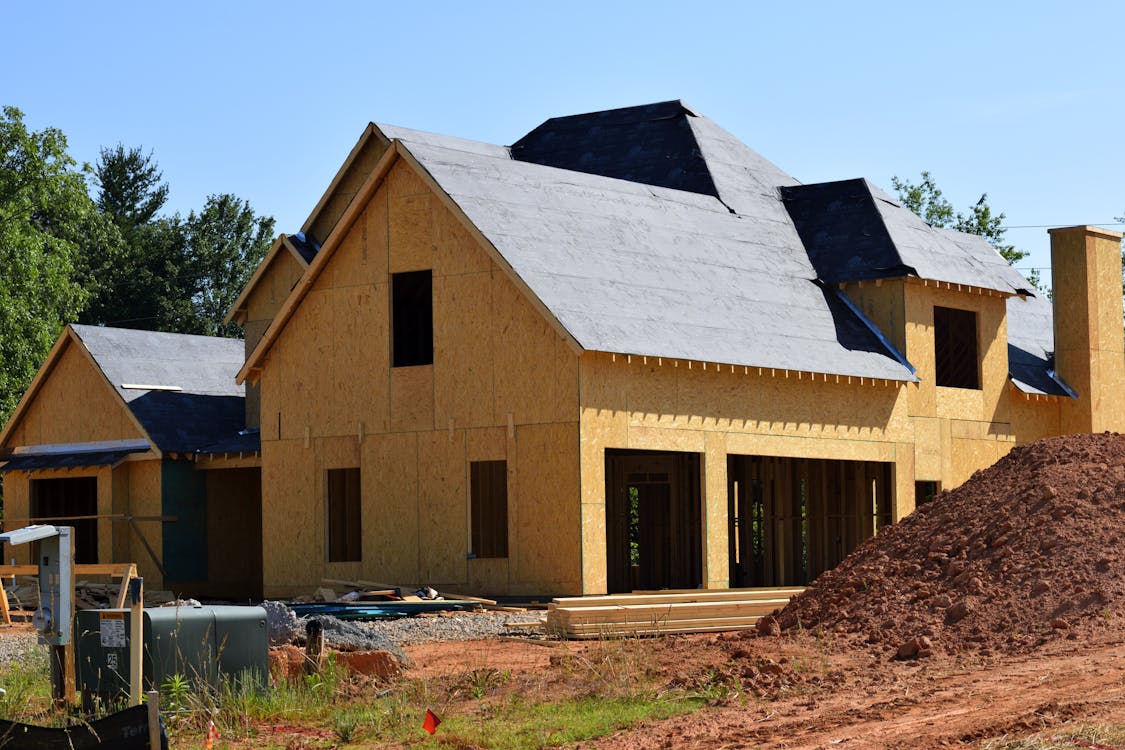Beginning a new construction project is an exciting endeavor, but managing the financial aspect can often feel daunting. Understanding how funds are disbursed throughout the construction process is essential for effective cash flow management and successful project completion.
In this blog, we’ll explain the new construction loan draw process, shedding light on how funds are distributed in stages during the journey of building a new project.
The Construction Draw Process
New construction loans operate on a unique disbursement model known as the construction draw process. Unlike traditional mortgages where funds are disbursed upfront, construction loans release funds in phases, aligning with specific milestones in the building timeline.
Let’s explore the typical phases of a construction draw and how funds flow through each stage:
Pre-Construction Phase
Before breaking ground, the pre-construction phase sets the groundwork for the project’s success. During this phase, borrowers work closely with architects, engineers, and contractors to finalize plans, obtain necessary permits, and secure financing. While no funds are disbursed during this phase, meticulous planning is critical for laying a solid foundation for the construction process.
Foundation and Site Preparation
With plans in place and permits obtained, the construction kicks off with site preparation and foundation work. This phase involves excavating the site, laying the groundwork, and pouring the foundation. Once this crucial step is completed and verified by inspectors, the first draw request is submitted to the money lender.

Framing and Rough-Ins
As the project progresses, the focus shifts to framing the structure and installing rough mechanical, electrical, and plumbing systems. Funds are disbursed to cover material and labor costs associated with framing, roofing, and rough-ins. Contractors submit invoices and progress reports to document the work completed, facilitating the release of funds for the next phase.
Interior Work and Finishes
With the framework in place, attention turns to interior finishes and detailing. This phase encompasses installing drywall, flooring, cabinetry, fixtures, and other aesthetic elements. Funds are allocated to purchase finishing materials and compensate contractors for their labor. As each aspect of the interior work is completed and verified, additional funds are released accordingly.
Final Inspections and Completion
As construction nears completion, final inspections are conducted to ensure compliance with building codes and quality standards. Once all inspections are passed and the project is deemed ready for occupancy, the remaining funds are disbursed to cover any outstanding expenses and finalize payments to contractors and suppliers.

Managing Cash Flow Effectively
Navigating the construction draw process requires careful attention to cash flow management to ensure that funds are allocated judiciously and utilized efficiently throughout each phase of the project.
Here are some tips for managing cash flow effectively:
Develop a Comprehensive Budget:
- Begin by creating a thorough budget that accounts for all anticipated expenses throughout the construction project, including materials, labor, permits, fees, and contingencies.
- Break down the budget into specific categories and line items to provide clarity on where funds will be allocated.
- Consider consulting with construction professionals or financial advisors to ensure that your budget is realistic and accurately reflects the scope of the project.
Regularly Monitor Expenses:
- Continuously monitor your expenses against the budget to track spending and identify any deviations or unexpected costs.
- Implement a system for tracking expenses in realtime, whether through accounting software, spreadsheets, or manual record-keeping.
- Conduct regular budget reviews to assess spending patterns, identify areas of overspending or underspending, and make necessary adjustments to stay on track.

Prioritize Essential Costs:
- Identify and prioritize essential costs, such as materials and labor, that are critical to the progress and completion of the construction project.
- Allocate funds to essential costs first to ensure that key milestones are met on time and within budget.
- Evaluate non-essential expenses and consider deferring or scaling back discretionary spending to conserve cash flow without compromising the quality or integrity of the project.
Negotiate Payment Terms:
- Negotiate favorable payment terms with suppliers, contractors, and subcontractors to optimize cash flow and minimize the impact on working capital.
- Request extended payment terms to stagger cash outflows and align payments with project milestones or cash receipts.
- Explore opportunities to negotiate discounts for early payment or bulk purchases to reduce overall project costs and conserve cash flow.
Maintain Cash Reserves:
- Build a cash reserve to serve as a buffer against unexpected expenses, delays, or fluctuations in cash flow.
- Set aside a portion of funds from the construction loan or project budget as a contingency reserve to cover unforeseen costs or emergencies.
- Regularly review and replenish the cash reserve as needed to maintain financial stability and mitigate risk throughout the construction project.

Track Progress and Milestones:
- Monitor progress against project milestones to gauge the pace of construction and anticipate future cash flow needs.
- Develop a project timeline or schedule that aligns with the construction draw schedule and identifies key milestones for each phase of the project.
- Use project management tools or software to track progress, document completed tasks, and identify any delays or deviations from the original plan.
Stay Flexible and Adapt:
- Remain flexible and adaptable in response to changes in the construction project, market conditions, or unforeseen challenges.
- Anticipate potential risks or disruptions and develop contingency plans to address them effectively without compromising project objectives or timelines.
- Regularly reassess the budget, cash flow projections, and project plan to accommodate changes and make necessary adjustments to stay on track.
Communicate with Stakeholders:
- Maintain open and transparent communication with all stakeholders involved in the construction project, including private lenders, investors, contractors, and suppliers.
- Provide regular updates on project progress, budgetary concerns, and any changes that may impact cash flow or project timelines.
- Foster collaborative relationships with stakeholders and encourage proactive engagement to address issues, resolve conflicts, and ensure alignment on project goals and objectives.
Obtain New Construction Loans with Insula Capital Group
Understanding how funds are disbursed in new construction loan phases is essential for navigating the complexities of building projects and managing cash flow effectively. By following the construction draw process and implementing sound financial practices, borrowers can ensure that funds are allocated judiciously and utilized efficiently to bring their vision to life.
At Insula Capital Group, we specialize in providing tailored financing solutions for new construction projects, offering flexible terms and personalized support to help borrowers achieve their construction goals.
Now achieve your investment goals with our expedited hard money loan approvals, fix and flip financing, and flexible long-term private loans.
For more information on our new construction loan options and financing services, contact us today.




